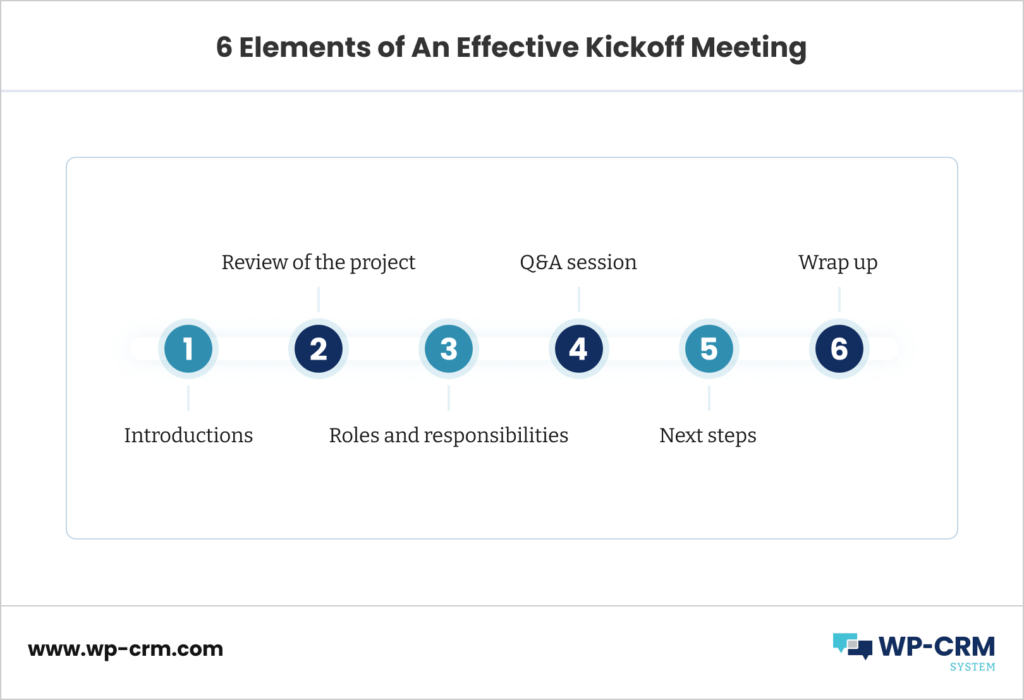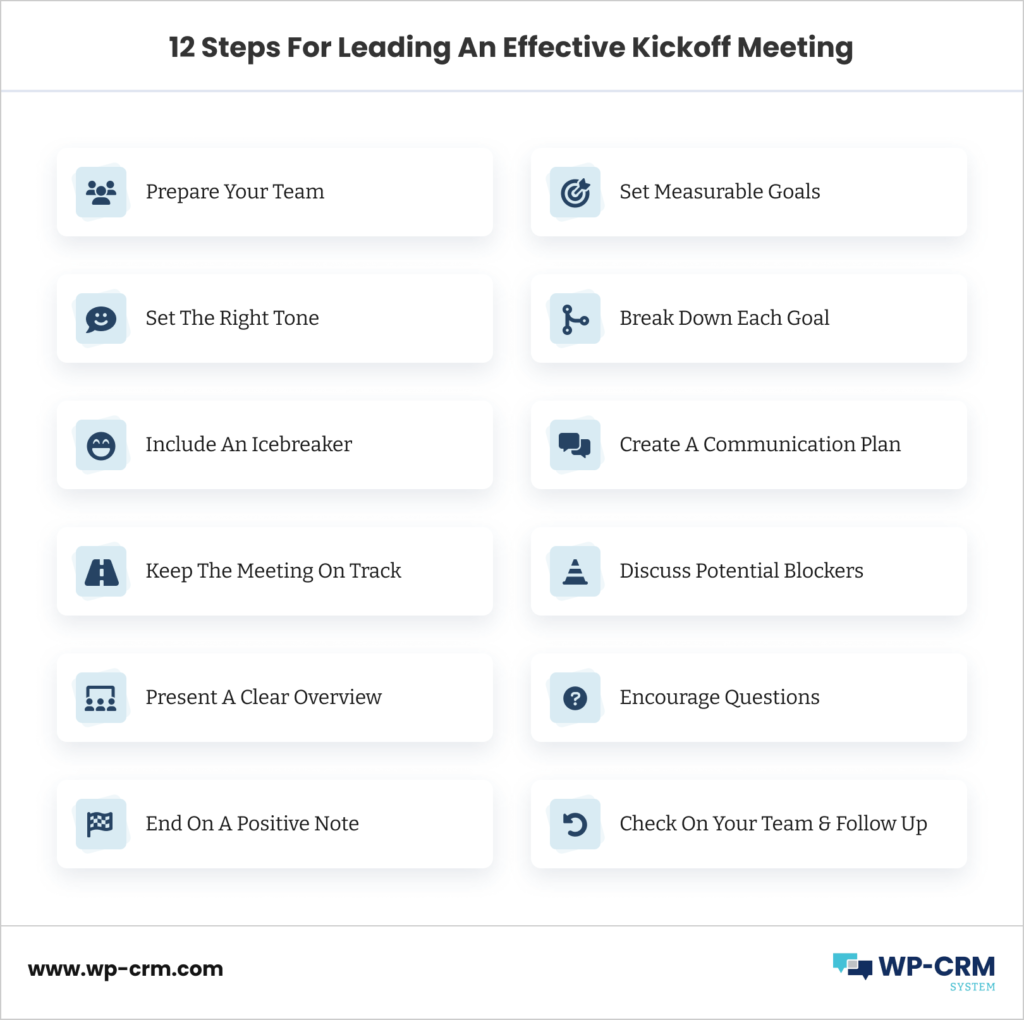12 Tips For Leading An Effective Kickoff Meeting
Developing the skill of leading an effective kickoff meeting is at the core of strong client relationships. Are you about to hold your first one on your own? If so, you’re likely feeling both excited and anxious. After all, you get to finally put your ideas into action, and there’s a lot on the line.
Luckily, we’ve compiled 12 tips to help make sure your kickoff meeting is a success. Whether you’re looking to nail down the agenda or ensure everyone is on the same page, these tips will help set the tone for an effective and productive meeting. So read on and get ready to lead your next kickoff meeting like a pro!
What Is A Kickoff Meeting?
A kickoff meeting is a chance for you, as the project leader, to set the tone for the entire project. It’s an opportunity to get everyone on the same page and ensure they are clear about the goals, objectives, and deliverables of the task at hand.
The kickoff meeting is also a great time to build relationships with your team and establish trust. After all, effective teamwork is essential to the success of any project.
By taking the time to plan and prepare for your kickoff meeting, you can set your team up for success from the very beginning. Kickoff meetings can be internal and external.
- Internal kickoff meetings – These are held with your team and usually happen before you meet with the client. This is a chance for you to go over the project in detail and make sure everyone is on the same page.
- External kickoff meetings – These are held with the client and usually happen after you’ve already met with your team. This is a chance to present the project plan to the client and get feedback.
Elements of A Kickoff Meeting

Each effective kickoff meeting has 6 common stages:
1. Introductions – The team that will work together on the project can get to know each other and build rapport.
2. Review of the project – This is a chance to go over the project in detail and make sure everyone is clear on the goals, objectives, and deliverables.
3. Discussion of roles and responsibilities – Assign roles and responsibilities and make sure everyone knows their part in the project.
4. Q&A session – This is a chance for everyone to ask questions and get clarification on anything they’re unsure about.
5. Next steps – Go over the next steps in the project and ensure everyone is on the same page.
6. Wrap up – Thank everyone for their time and effort and to reiterate the importance of the project.
By including these elements in your agenda, you can make sure that your kickoff meeting is productive and successful.
How To Lead An Effective Kickoff Meeting: 12 Steps

Prepare Your Team Ahead of Time
One of the best ways to ensure that your kickoff meeting is successful is to prepare your team early on. Send out an agenda and any relevant materials beforehand so that everyone has a chance to review them.
Also, take the time to answer any questions or concerns that your team may have. The more prepared they are, the more likely they are to be engaged and productive during the meeting. A lot of the questions that arise at this stage may later on pop up in conversations with clients.
Set The Tone
As the leader of the meeting, it’s up to you to set the tone. This means being positive, enthusiastic, and confident about the project.
Your attitude will rub off on your team, so it’s important to be mindful of how you’re coming across. If you’re feeling stressed or overwhelmed, take a few deep breaths and focus on the positive.
Include An Icebreaker

A great way to start any meeting is with an icebreaker. Once you’ve started off on a positive note, a fun activity or a warm-up anecdote will help everyone relax and feel more comfortable with each other.
There are tons of different icebreakers you can use, so take some time to find one that will work well for your team. Once you’ve chosen an icebreaker, make sure to explain the rules and give everyone a chance to participate.
Keep The Meeting On Track
It’s important to make sure the meeting goes as scheduled so that you can accomplish your goals. This means sticking to the agenda and keeping things moving along.
If someone goes off on a tangent, politely bring them back to the topic at hand. However, if the discussion starts getting heated, take a break and come back to it later.
Present A Clear Overview
It is fundamental to present a clear overview of the project. so everyone on your team and the client are on the same page and see the big picture. This means briefly going over the goals, objectives, and deliverables.
It’s also a good idea to give a timeline of the project so that everyone knows what to expect. And be sure to answer any questions that your team may have.
Set Measurable Goals
Set measurable goals for the project so that you can track your progress. This will help you stay on track and make sure that you’re meeting your deadlines.
Be sure to involve your team in setting the goals so that everyone is invested in the project. Also, review the goals regularly so that everyone is on the same page.
Break Down Each Goal Into Steps

Once you’ve set your goals, it’s time to break them down into steps. This will help you create a plan of action and ensure that everyone knows what they need to do.
Involve your team in this process so that they can provide input and feedback. And make sure to review the steps regularly so that everyone is on the same page.
Create A Communication Plan
A key part of any project is communication. This means setting up a system for keeping everyone informed and up-to-date.
There are tons of different collaboration tools available, so take some time to find one that will work well for your team. Once you’ve chosen a solution, make sure to explain how it works and give everyone a chance to use it.
Discuss Potential Blockers
No project is perfect, so it’s important to discuss potential blockers. So, identify any risks or challenges that could impact the project.
Be sure to have your team in this discussion so that everyone can share their concerns. Also, come up with a plan for how to deal with these blockers if they do occur.
Encourage Questions And Comments
The kickoff meeting is a great opportunity for questions and comments. This will help everyone get clarification on the project and provide feedback.
Be sure to encourage your team to ask questions and share their thoughts. And make sure to answer any questions that they may have.
End On A Positive Note
The last thing you want to do is end on a negative note. This means taking a few minutes to recap the project and emphasize the positive.
It’s also a good idea to thank your team for their hard work and dedication. And be sure to set up a follow-up meeting so that you can continue the conversation.
Check On Your Team After The Meeting
Once the meeting is over, it’s important to check in on your team. This means making sure that everyone is on the same page and that they understand the project.
It’s also a good idea to ask for feedback on the meeting itself. This will help you improve future meetings and ensure that everyone is getting what they need.
In addition, do not isolate your clients during the project execution. Send them a follow-up email after the meeting and keep them posted on the progress you achieve. Use WP-CRM to track your emails and reply to notifications on time. After all, transparency in client relationships is key for steady and loyal partnerships.
Wrapping Up
In order to ensure that your kickoff meeting is successful, it’s important to set the tone and prepare your team ahead of time. By following these 12 steps, you can lead an effective kickoff meeting that will help get your project off on the right foot.
